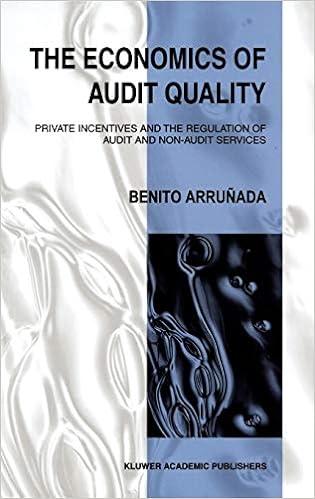Answered step by step
Verified Expert Solution
Question
1 Approved Answer
Compute expected profit according to the original budget (before the experiment). Compute expected profit according to the March 1 budget. Compute expected profit according to


Compute expected profit according to the original budget (before the experiment).
Compute expected profit according to the March 1 budget.
Compute expected profit according to the flexible budget.
Compute actual profit.
Hmmm! is a neighbourhood coffee shop that sells the best coffee in the world. In addition to coffee, Hmmm! sells a few food items, mostly baked goods that pair well with coffee. The shop is open 24 hours. It runs three shifts, each staffed with the same number of people. The first shift begins at 6:00 a.m., the second at 2:00 p.m. and the third at 10:00 p.m. At the end of each month, the owner meets with the manager to discuss how things went that month and to prepare the budget for the upcoming month. The basic budget that is used each month is as follows: Number of shifts Number of customers Cups of coffee sold Food items sold 90 9,000 11,250 3,150 Coffee revenue Food revenue 66,375 11,025 Coffee cost Food cost 14,400 6,300 Labour cost Utilities cost 34,200 12,150 Depreciation on equipment Rent 1,500 900 At the end of February, the monthly budget meeting was held. The results for February were discouraging-net income was only $6,542. Much of the discussion centered around the three shifts that seemed to be contributing the least to the overall success of the firm. These are the last shift (from 10:00 p.m. to 6:00 a.m.) beginning on Sunday night through early Wednesday morning. The manager suggested that they close the shop for these three shifts. Both agreed that average customers per shift would likely increase as a result, perhaps to as much as 120 customers per shift. After much back and forth, they agreed to try closing those shifts for the month of March and re-evaluate after examining the results of the experiment. They prepared the budget based on the reduced number of shifts and the expected increase in customers per shift. At the end of March, the owner prepared the following static budget analysis: Budget Variance 78 Item Number of shifts Customer Cups of coffee Food items Actual 78 8,869 12,206 4,934 * 491 U 9,360 11,700 3,276 506 F ** 1,658 F Coffee Revenue Food Revenue 69,030 11,466 66,573 20,227 2,457 U 8,761 F ** 517 F Coffee cost Food cost 14,976 6,880 14,459 11,594 ** 4,714 U Labour cost Utilities cost 29,640 10,530 29,640 10,140 390 F Depreciation on Equipment Rent 1,500 900 1,500 1,000 * 100 U Authors Notes: For purposes of this exercise, please assume that the costs included in the budget are the only costs the firm incurs. Cups of coffee and number of food items sold are budgeted per customer. Utilities cost is budgeted per shift. Depreciation and rent are fixed. The asterisks in the final column indicate a significant variance based on a rule of thumb that anything over 5% of the budget is significantStep by Step Solution
There are 3 Steps involved in it
Step: 1

Get Instant Access to Expert-Tailored Solutions
See step-by-step solutions with expert insights and AI powered tools for academic success
Step: 2

Step: 3

Ace Your Homework with AI
Get the answers you need in no time with our AI-driven, step-by-step assistance
Get Started


